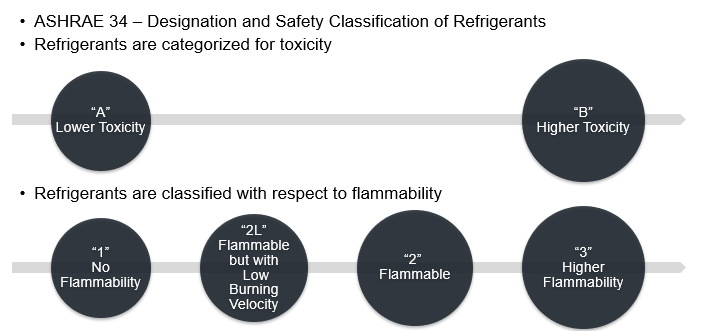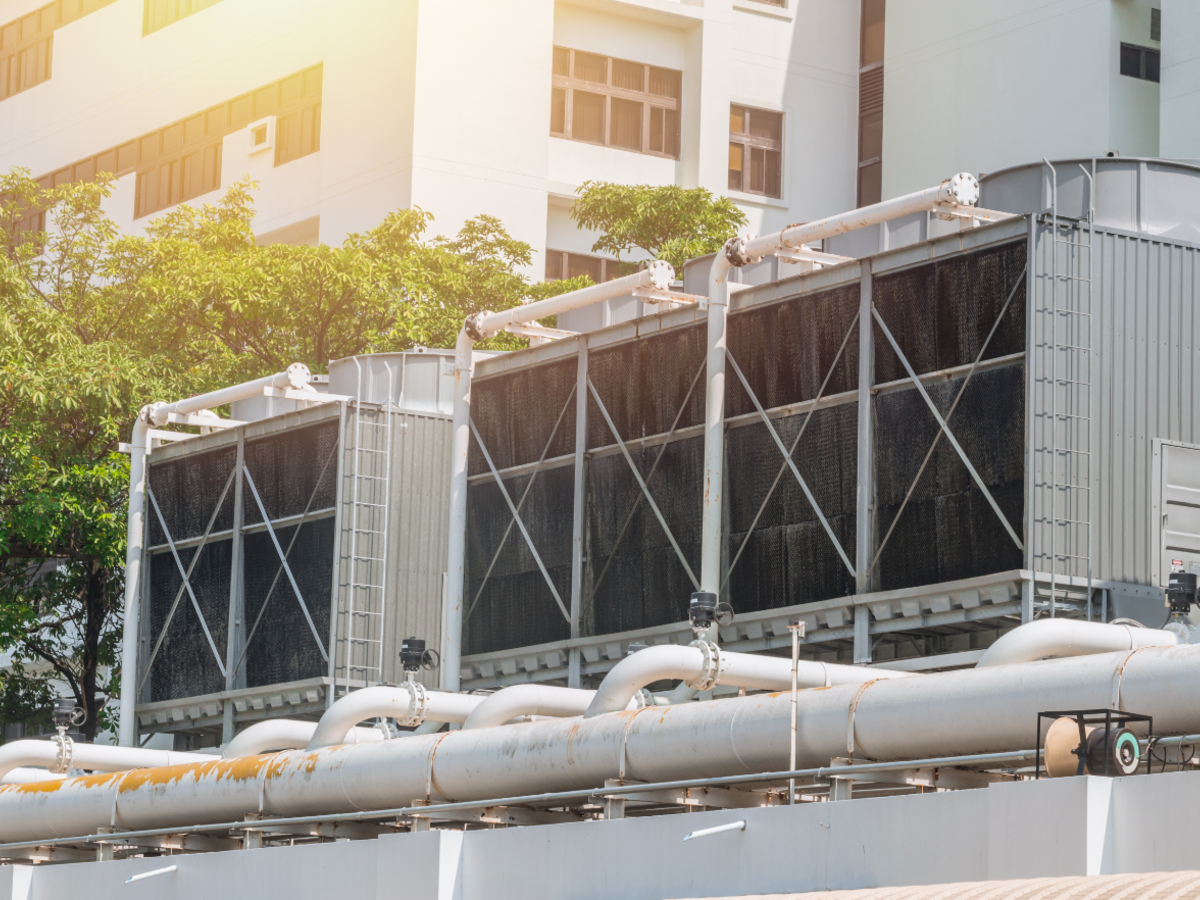December 2, 2019
Authored by John K. Taecker, Senior Regulatory Engineer
In support of the Kigali Amendment to the Montreal Protocol and the Paris Climate Agreement and to promote efforts to reduce global warming, a coalition of US state governors has formed the US Climate Alliance. The Alliance’s goal is to demonstrate leadership by advancing responsible climate change legislation. A critical area of focus for the Alliance has been the reduction of greenhouse gas emissions, such as hydrofluorocarbon (HFC) refrigerants.
Several US states have introduced measures curtailing use of these gases. For example, California through the Air Resources Board (CARB) has proposed a global warming potential (GWP) proposed limit of 750 starting Jan. 1, 2023, for HVAC products, and Jan. 1, 2024, for chillers, as well as additional requirements for refrigeration systems to go into effect in 2021. In response to state government regulations, manufacturers are developing systems to accommodate the use of lower GWP refrigerant alternatives.
The challenge in deploying alternative refrigerants is that lower GWP refrigerants come with trade-offs. Many alternatives exhibit more flammable properties than refrigerants they would replace (designated as ASHRAE A1).

The air conditioning and refrigeration industry has been actively working to address this issue for 30 years and, since 2006, by developing a new classification of refrigerants, known as A2L, aimed at meeting the most recent lower GWP challenge. While having slightly higher flammability characteristics versus A1 refrigerants in use today, A2Ls are harder to ignite and are much less flammable than A3 refrigerants, such as the hydrocarbon R290 (propane). A US/Canada binational consensus group of experts was formed to update product safety and application standards to allow the safe use of these more environmentally friendly refrigerants within HVAC systems. For many existing air conditioning systems that use R-410A, the most promising lower GWP alternatives include R-32 and R-454B, which are A2Ls.
The New Requirements
UL 60335-2-40 Household and Similar Electrical Appliances - Safety - Part 2-40: Particular Requirements for Electrical Heat Pumps, Air-Conditioners and Dehumidifiers 3rd Edition, published Nov. 1, 2019, is an ANSI/SCC accredited US/Canada bi-national consensus safety standard. Further, it is based on IEC 60335-2-40, the international standard currently being used as the basis for the evaluation, testing and certification of HVAC equipment designs using low GWP refrigerants in Europe and elsewhere. Overall, UL 60335-2-40 has adopted more conservative safety requirements than the IEC standard to address the unique HVAC/R installation and safety safeguarding practices of the North American market.
One of the risks associated with any mechanical refrigeration and air conditioning equipment is refrigerant leakage. An integral feature provided to mitigate this risk is a refrigerant leak detection system. Above a prescribed refrigerant charge limit (typically > 4 lbs.), refrigerant leak detectors that sense loss of charge in the occupied space are required for all systems.
Refrigerant leak detection systems are also required to activate the evaporator fan that uses circulated air to quickly disperse and dilute detected refrigerant in the event of a leak. This is intended to prevent the formation of flammable refrigerant concentrations.
In addition, UL 60335-2-40 requires that refrigerant charge limits be based on the minimum occupied volume of the room where the equipment is expected to be used. This charge limit requirement has a safety factor of four to effectively dilute leaked refrigerant to well below the lower flammability limit (LFL) for the room size. As an additional safeguard, UL 60335-2-40 also requires appliances to be free of potential internal ignition sources to mitigate the risk of the appliance being a source of potential ignition.
Requirements for Refrigerant Leak Detection Systems
The following summarizes the key safety requirements in UL 60335-2-40.
- Indicating type detectors are required to be factory installed by the manufacturer with sensors optimally located to detect any leaks.
- Refrigerant leak detector sensor set point is factory set and sealed with no field adjustment permitted. Routine factory inspections are conducted by UL as a means to validate continuing compliance with the listing requirements. Detector markings identify the manufacturer and refrigerants used.
- The leak detection system is required to activate at below a concentration of 25% of the LFL, taking into account room volume and refrigerant being used. This 4-times safety factor minimizes the risk of flammable concentrations.
- Detection systems activate available mitigation devices such as circulation fans.
- Self-test protocols run every hour to supervise proper operation and function of the detection system. In the event of supervised detector failure, the circulation fan(s) activate and maintain a required diluting air movement. This fail-safe mode is maintained until the detector is replaced.
- Detector software is considered part of a Protective Electronic Control which is tested to determine robustness, functionality and reliability of the circuit.
- The sensor cannot be subject to poisoning due to common household and workplace contaminants that would compromise the sensor function or reliability.
- These systems are required to pass testing designed to address long term stability, vibration, range and setpoint verification, and response time.
- If the detector has a defined life and requires replacement after a given period of time, the detection system shall initiate the appropriate mitigation requirements until the detector is replaced.
How UL is Making an Impact
Refrigerant leak detection systems have been in use by the HVAC/R industry for decades — in areas such as machine rooms and supermarkets — for a majority of all refrigerants currently in use. While technology exists today to meet the new requirements of UL 60335-2-40, HVAC equipment manufacturers are actively working with sensor manufacturers to determine the optimal balance of properties for their system designs while also integrating all the safety requirements defined for a full detector package. Further research (e.g., AHRTI-9014 Sensor Assessment Project Review) is being conducted to enhance this process, further enabling manufacturers to complete their work before CARB’s proposed January 1, 2023, effective date for implementing lower global warming potential refrigerants in air conditioning systems.

